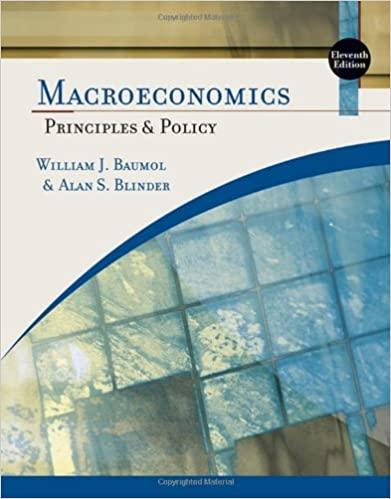Question
The inverse demand curve for a product using resource X is given by P = 200-0.5Q and the cost of production is constant at MC
The inverse demand curve for a product using resource X is given by P = 200-0.5Q and the cost of production is constant at MC = 25.
a. Find the static equilibrium for this product in a single time period (call thist0) (recall at equilibrium Supply equates Demand and in this case Demand or Price = Marginal Cost).
b. What is the value of consumer surplus from consumption in t0? (recall, this is simply the area under the demand curve and above the price, which now equates Marginal Cost)
Imagine that resource X is infinite in supply or perfectly renewable and that the demand and supply curves are unchanged between years.
c. How much would be produced/consumed in the following year (called t1)?
Because Marginal Cost is constant in this example, it is possible to simply subtract MC from the demand curve to establish the Net Marginal Benefits (i.e. the Consumer Surplus) in each time period. This effectively creates a Net Marginal Benefit curve that shifts downwards from the initial demand curve but remains parallel.
Thus, the Net Marginal Benefits are given by NMB = 200 - 0.5Q - 25 = 175 - 0.5Q
Now imagine that there is not enough of resource X to support the static efficient consumption in both time periods (i.e. t0 and t1). More specifically, assume that the total stock available in both periods is 600 units.
d. How much is consumed in t0?
e. How much is left to consume in t1?
You may find this distribution is quite uneven with most consumption occurring in t0.
f. Assume a discount rate of 8%, how much is the NMB of the following year (period t1)? (note that you need to discount the future value of NMB in period t1 into a present value).Hint: take the NMB formulae for t1- assumed the same as for t0 - and divide by the factor 1.08 (because the discount rate is 8%).
Step by Step Solution
There are 3 Steps involved in it
Step: 1

Get Instant Access to Expert-Tailored Solutions
See step-by-step solutions with expert insights and AI powered tools for academic success
Step: 2

Step: 3

Ace Your Homework with AI
Get the answers you need in no time with our AI-driven, step-by-step assistance
Get Started


